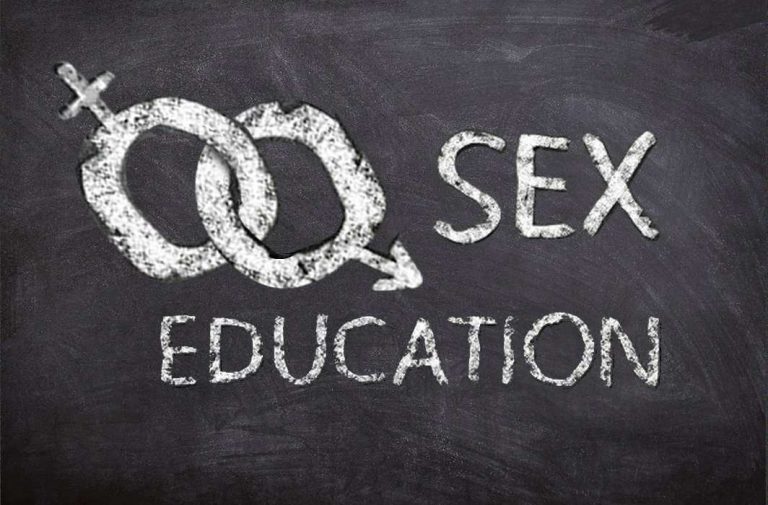
The taboo of sex education is, at last, being addressed through apps and other help-aids
~By Chandan Goswami
Over 53 percent of children in India who live with their families, but are out of school, have reported facing sexual abuse. Schools aren’t safe either. Almost one in two children in schools reported facing sexual abuse. And when children are forced into labour—such as in shops or factories—this abuse rate shoots up to 62 percent.
These are some of the hard facts revealed in a national study report (see box); facts that stare into our faces and question our hypocritical approach to sex education in schools. It is still taboo.
This critical aspect of our education—which has the power to assist the overall development of an individual —has been ignored for so long that it has now become imperative.
Sex education—especially in schools—is a topic which no one wants to address. Teenage is a vulnerable age, always very curious and inquisitive. It seeks knowledge. And when teenagers are provided misinformation, wrapped in semi-truths, they often become misguided. Every year, almost in crores, as the records state, adolescents fall prey to unsafe sex practices leading to various kinds of STDs. The lack of awareness among the teenagers has resulted not only in unsafe sex practices but also substance abuse, mental disorders including depression and anxiety.
The UNICEF, in its reports, states that one in every three adolescents experience physical, mental and sexual violence, and of them 13 percent face sexual violence from their partners. The data also shows that 77 percent girls are victims of sexual abuse either by partners or by their husbands. Past attempts at making sex education a part of school curricula had faced criticisms including from political parties, parents and even teachers who were too embarrassed to talk about sex with the students. Owing to the stigma attached, discussing issues related to mental health is still considered a taboo.
The need for sex education rises with the alarming level of data on sexual abuses that the adolescents face. The newspapers run articles, YouTube flourishes with videos, but a concrete law has never been defined leave alone been codified.
It is a welcome step that the Union government recently launched the Saathiya kit, under its ambitious Rashtriya Kishor Swasthya Karyakram. The Union health ministry launched the resource kit especially designed by experts to help peer educators, especially in villages, discuss sensitive issues and answer teenage queries in their community in an informed manner.
Under this scheme, more than 1.5 lakh teenagers are being trained to address the inquisitive questions of the 26 crore adolescents on reproductive health, sexual health, substance abuse and mental health among various other issues that concern their age.
The resource kit comprises i) activity book, ii) Bhranti-Kranti game iii) question-answer book and iv) Peer Educator diary.
A national study reported the following:
53.18% children in the family environment not going to school reported facing sexual abuse.
49.92% children in schools reported facing sexual abuse.
61.61% children at work (shop, factory or other places) reported facing sexual abuse.
54.51% children on the streets reported facing sexual abuse.
47.08% children in institutional care reported facing sexual abuse.
20.90% of all children were subjected to severe forms of sexual abuse that included sexual assault, making the child fondle private parts, making the child exhibit private body parts and being photographed in the nude.
50% abusers are persons known to the child or in a position of trust and responsibility.
—Data source: jagoree.com
In addition to the kit is the mobile app “Saathiya Salah” (downloadable from Google play-store) which acts as a ready information source for the adolescents in case they are unable to interact with the Peer Educators. The mobile app is also linked to another important piece of cost-effective information platform of a toll-free Saathiya Helpline (1800-233-1250) which will act as an e-counsellor. While the short films will be played by the Peer Educators at their group meetings, the activity book and games will bring about discussion and resolve adolescent queries.
Cashing in on mobile technology, the shy adolescents or those unable to interact with the Peer Educators due to family reasons, can access the information through the free mobile app as well as the toll free helpline.
A welcome step indeed but will this give birth to a new era of concrete sex education being introduced in the syllabus or not is a question that needs immediate attention.


There is an increasing trend of sexual abuse and related offense globally. Particularly in India , we advocates in madras high court offer legal services for such cases in Chennai, Tamilnadu. These data will be very useful for Lawyers as well as general public.
Thanks
Advocate Saravvanan Rajendran
http://www.lawyerchennai.com/
I appreciate you for reading the article. I hope these facts help you in your endeavours.
Comments are closed.